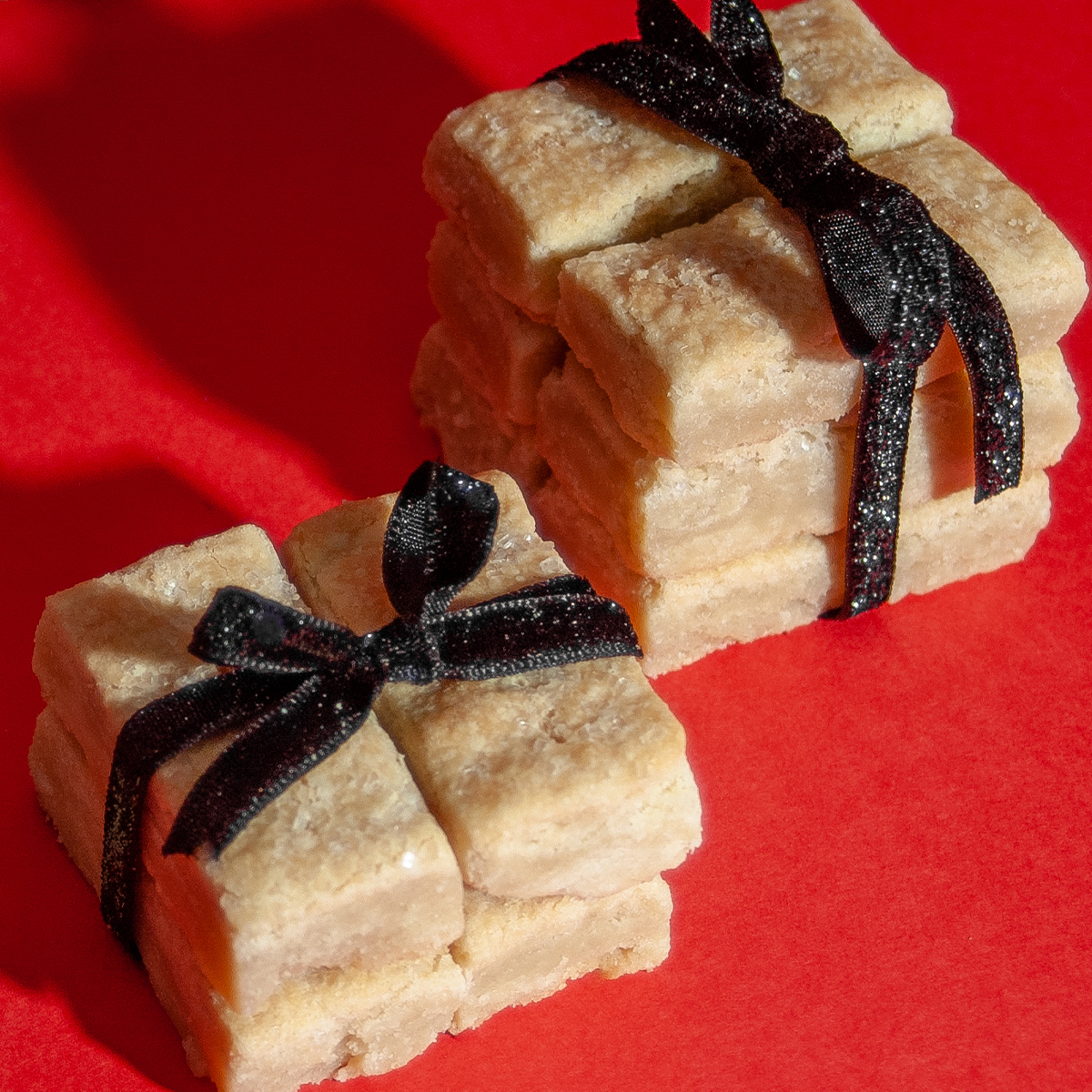Last updated on February 23rd, 2025
Classic Scottish Shortbread is a rich, buttery, melt-in-your mouth cookie made from butter, sugar and flour. Give these homemade cookies away in a plaid tin or box as a delightful gift to give away this holiday season.
Did you know that there are several ways shortbread can be formed into cookies? The most traditional way is of course as rectangle bars. Another option is to roll out the dough to 1/4″ and cut out shortbread into round cookies. A third option is to bake shortbread in round or square ceramic baking pan with embossing such as the Celtic knot or thistle, Scotland’s national flower and then cut into squares or scone-like wedges.
How to make Classic Scottish Shortbread
INGREDIENTS
butter:
Since butter is the star ingredient in Classic Scottish Shortbread, the higher quality butter, the better your shortbread will taste. I use either Challenge or Land O’ Lakes European Style. European butter has more flavor and less water and is a bit more tangy since it is churned longer and produces a higher percentage of fat (82%-85%). American butter is regulated by the USDA to have a minimum of 80% fat.
sugar:
Use superfine (baker’s sugar) in this traditional recipe to dissolve faster as you cream together with the butter. You can also use 1 3/4 c. confectioners sugar in place of the 1 c. sugar for an even lighter crumb. Another option is to use brown sugar to add a warm flavor.
cornstarch:
This recipe essentially has a homemade pastry flour, since I’ve taken unbleached flour and added cornstarch. The addition of cornstarch will lighten up the protein of the unbleached flour to ensure a tender, sandy texture. Cornstarch also helps to bind the dough if you are using an American butter which contains a higher water content.
BAKER’S TIPS
chill the dough:
Chill the pan of shortbread for 30 minutes. This will solidify the butter allowing you to score the shortbread into bars. Chilling the dough will also keep the top from browning too fast and help to keep the bar shape from spreading out while baking. Another way to ensure the shortbread bakes evenly is to pierce the top with traditional fork marks while the dough is cold.
EQUIPMENT
baking sheet:
Always use light-colored, aluminum cookie sheet. Aluminum is best for distributing and reflecting even heat during the baking process. I use Nordic Ware aluminum quarter-sheet pan lined with parchment paper. Cut the parchment paper to hang over the sides so you can easily lift out the bars before cutting them. Do not use dark baking sheet for shortbread as it conduct more heat off the surface, and may darken the edges before they are fully cooked.

Scottish Shortbread
Ingredients
DRY INGREDIENTS
- 4 c. unbleached flour
- ½ c. superfine "bakers sugar"
- ½ c. confectioner sugar
- 2 T. cornstarch
WET INGREDIENTS
- 2 c. salted butter (European style) room temp
- 1 ½ tsp. vanilla
Instructions
PREP
- Gather equipment.
- Whisk together dry ingredients.
MAKE BATTER
- Mix together butter and sugar until light and fluffy.
- Add vanilla and mix.
- Add in flour and cornstarch and mix well.
- Line quarter sheet pan or 9×13 pan with parchment paper that overhangs the sides to easily lift out the bars after they are baked.
- Spread dough even in the pan. Place parchment paper over the top and use small pastry rolling pin to smooth out. Chill for 30 minutes.
- Use a sharp paring knife to score into 24 bars. Pierce fork holes into each bar. Sprinkle with white sanding sugar.
- Chill cookies in the fridge for 5-10 minutes.
BAKE
- Bake shortbread at 350° for 30 minutes. Remove from oven, re-score the bars and return to oven for 10 more minutes or until golden brown. Turn off oven and leave shortbread in the oven with door cracked for 5 more minutes.
- Let cool. Cut bars with sharp paring knife and store in a container.